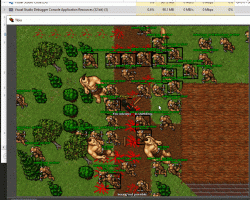frozenrose
New Member
- Joined
- Dec 15, 2019
- Messages
- 5
- Reaction score
- 3
I am developing my own engine in C# . My goal is to create an engine that work with Parallel tasks that all take care of a part of the system in a non blocking way, instead of a Scheduler to reduce the amount of context changes.
I am designing it for my own project so the goal is not to create a replica of Tibia systems and formulas, but instead to make it very easy and straightforward to add new systems like highly customizable items, unique monsters with levels/custom behavioral system and such.
I wanted to know if it could interest anyone. The source code is fairly messy for now, but I should be starting to clean it shortly (in the upcoming weeks)
Liza
I am designing it for my own project so the goal is not to create a replica of Tibia systems and formulas, but instead to make it very easy and straightforward to add new systems like highly customizable items, unique monsters with levels/custom behavioral system and such.
I wanted to know if it could interest anyone. The source code is fairly messy for now, but I should be starting to clean it shortly (in the upcoming weeks)
Liza

